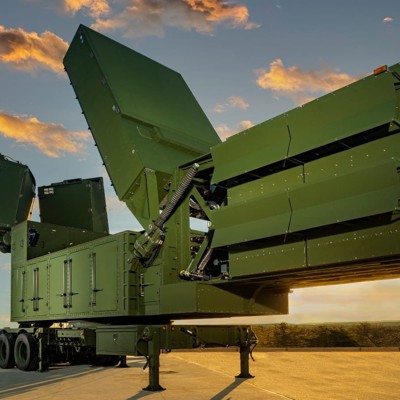The Army took a major step Monday in replacing the aging Patriot air defense missile system, with the selection of a new radar.
The Lower Tier Air and Missile Defense Sensor, from Raytheon, has gotten the all-clear to begin initial production, the company announced, as part of the Army’s two-part approach to modernizing its ground-based air defense capabilities.
“This is an unprecedented achievement, with a development program of this magnitude transitioning from prototype to production and deployment at an accelerated pace,” Tom Laliberty, president of Land and Air Defense Systems, said in a release.
The Army moved to initiate “the production and deployment phase of the program,” service spokesman Darrell Ames confirmed.
The service first awarded Raytheon a contract to develop radar prototypes in 2019. At the time, the Army was looking for a single system to replace the Patriot, which was first deployed in 1984. Since then, there have been a handful of different plans for replacing it—most recently a competition that the Army canceled in October.
At that point, the service decided it would buy a new radar separately from a command-and-control system.
That worked out nicely for LTAMDS, which has done eight successful flight tests under Army supervision. The service has received the first six radars, according to the release, with eight more in production.
The company plans to eventually produce a dozen yearly, for both the Army and international clients.
“Raytheon will deliver radar seven and eight later this year and is producing radars for the U.S. Army and Poland that were contracted for in August 2024,” the release said.
Six years from development contract award to initial production is pretty quick for the Army. LTAMDS was developed with rapid-prototyping authority, according to the release, cutting the timeline down from what has been known to take more than a decade.
Though LTAMDS is now a program of record, Army leaders have stressed they want to get away from that acquisition process as much as possible.
“I think we have lots of authorities from Congress. I think we tend not to use all those authorities [that] have been given to us,” Neil Thurgood, a senior vice president at venture capital-backed Anduril, and a retired lieutenant general, said in March at the AUSA Global Warfare Symposium.
For LTAMDS, the Army used Middle-Tier Acquisition authority, according to Raytheon, which allows systems already in development to be moved more quickly through the process, ideally in two to five years.
Read the full article here







Leave a Reply